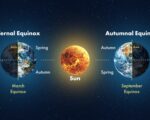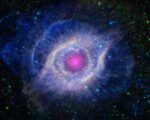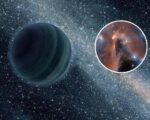Sky-watchers have another opportunity to view dazzling fireballs as the Northern Taurid meteor shower reaches its peak. The event, which began in mid-October, will be most visible from late Monday night into Tuesday, with the best time for sightings expected after midnight, according to NASA.
The Northern Taurids radiate from the Taurus constellation and are visible worldwide, except in Antarctica, noted Dr. Shannon Schmoll, director of Abrams Planetarium at Michigan State University. However, a 79% full moon may make it difficult to spot meteors in the earlier evening hours, the American Meteor Society (AMS) cautioned. Schmoll advises waiting until the moon is closer to setting for a clearer view, suggesting viewers find a dark area, get comfortable, and remain patient.
The Northern Taurids are generated by debris from Comet Encke, which completes a full orbit around the sun in just 3.3 years—the shortest known cometary orbit. Unlike major meteor showers, the Northern Taurids produce fewer meteors (around five per hour) but offer an elevated chance to witness spectacular fireballs. These larger meteors, sometimes as bright as Venus, can create striking visual trails that linger after the meteor has passed, known as “trains” or smoke trails.
Schmoll encourages viewers to take in the celestial display, noting that meteor showers help foster a connection with the natural world. Beyond their visual appeal, these showers offer astronomers and enthusiasts new insights into our solar system’s history and formation.
The Northern Taurids will remain active until December 2, providing continued chances to catch fireballs lighting up the night sky.
Upcoming Celestial Events
- Meteor Showers:
- Leonids: November 16-17
- Geminids: December 12-13
- Ursids: December 21-22
- Full Moons:
- Beaver Moon (Supermoon): November 15
- Cold Moon: December 15


















